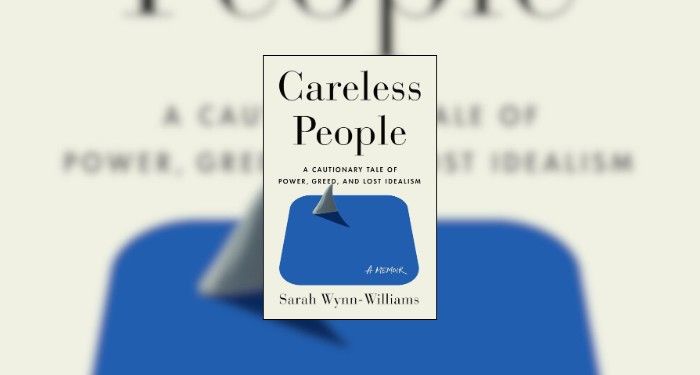Apart from the general survival value of empathy and compassion, these two traits combine to increase a leader’s influence dramatically. Empathy paired with compassion is the glue that binds leaders and their people together in positive, productive relationships.
Some experts think of empathy and compassion as part of the same human capacity. Others may use the terms “empathetic” and “compassionate” interchangeably. We believe that can be confusing. In our view, empathy and compassion are distinct but closely related skills.
Empathy is the ability to understand and appreciate what others are thinking, feeling and doing—and why.
Compassion, on the other hand, involves taking the next step—using what we have come to empathetically understand about others to show that we care about them concretely.
Having worked with hundreds of leaders, executives and entrepreneurs, we have found that there are four steps that will help you build empathy and compassion. Embracing these traits is an essential part of leadership effectiveness.
Step 1: Understand the challenging experiences of your followers.
It’s common for adverse circumstances to lock followers into highly charged emotions, irrational thinking, and unproductive behavior. Whenever a follower is stuck in such a state, progress toward your goals is virtually impossible. Fortunately, you have a powerful tool for helping followers get unstuck: empathy. Begin by demonstrating that you understand a follower’s challenging situation from their unique perspective. That’s the essence of empathy—your awareness of another person’s experiential triangle of thoughts, feelings and behavior.
For empathy to be practical, your understanding of another’s experiential world needs to be accurate. First, practice active listening. Many of us aren’t good listeners. Instead of paying close attention to what someone else is saying, we “listen to reply,” that is, we listen just enough to start thinking about what we want to say in response. However, when we’re too quick to change the focus of the conversation to ourselves and our ideas, the person trying to communicate with us won’t feel understood.
The second technique for developing and demonstrating empathy is to ask open-ended questions. Asking such questions is both challenging and critical to your leadership success. “Did you try talking to your teammate about this?” is an example of a closed-ended question because it’s easy to answer with a yes or no. It’s also a leading question since it suggests that talking to the teammate is an action you would recommend. Asking open-ended questions is both an art and a discipline. It’s an art because it takes careful thought to frame questions in a way that encourages people to be thoughtful about their situation. It’s also a discipline because it requires that you put aside your biases and assumptions about another person’s situation and how they should handle it. When crafting open-ended questions, begin your questions with:
What…
How…
Where…
When…
Can you tell me more about . . .
When you begin your questions with openers such as these, it’s much harder to ask unempathetic questions. For example, imagine how you would feel if someone asked, “Why did you do that?” Depending on the vocal tone of the person who asked you that question, there’s a good chance you might feel criticized and might respond defensively. Think instead about your reaction to someone asking you a question like “How did you approach this situation?”
Step 2: Help your followers address their challenging experiences.
To be an influential leader, you need to translate your empathetic understanding of a follower’s experience into compassionate action. Followers need to see that you understand their situation and are willing to support them in improving it. Questions such as “What do you think might improve this situation?” set the stage for helping someone move forward. If your follower struggles to come up with ideas, then it’s time to suggest some options. When sharing your thoughts as a leader, the compassionate approach is to suggest possibilities rather than dictate solutions. For example, there is a big difference between saying, “What if we met for 10 minutes every morning for the next week to review your goals for the day?” versus “I want to review your goals every morning in my office.”
Step 3: Your followers feel understood and supported by you.
When leaders are empathetic and compassionate, they create “cultures of belonging,” environments in which people feel understood and valued. In cultures of belonging, followers feel free to fully be themselves. They feel worthy no matter how different they are from typical employees. Those feelings of being understood and valued fuel a positive connection between followers and leaders.
Step 4: You and your followers move forward with a shared understanding and a sense of purpose.
Over time, everything you do to show followers that they are understood and valued fuels a positive connection between you and your followers. When it comes to influencing others in pursuit of a meaningful purpose, Step 4 is your payoff for being empathetic and compassionate.
It’s impossible to overstate the importance of empathy and compassion to your effectiveness as a leader. We’ve all had experiences with leaders who see us as commodities to be used, not as human beings who deserve understanding and compassion. We know the difference between leaders who care about us and those who don’t. And if we’re honest, we know the difference between how much or little effort we make in our work life depending on whether or not our leader treats us with empathy and compassion. Empathy and compassion have always been valuable leadership qualities, but today they are needed more than ever.
Seismic changes over the last 20 years in the expectations of followers, shifting workplace demographics, the global shortage of workers with next generation skills, and disruptive technologies, among many other forces, all demand that leaders cultivate compassionate relationships with their most precious resource—the people they need to help them accomplish their purpose. Richard Leider, best-selling author and one of America’s preeminent life and leadership coaches, emphasizes the urgent need for empathy and compassion: “The premium in today’s world is on empathy and compassion. Compassion is the soul of purpose, because the primary reason for our existence is to grow and give.”
The post The Leader’s Toolkit For Developing Empathy And Compassion appeared first on ChiefExecutive.net.







































































